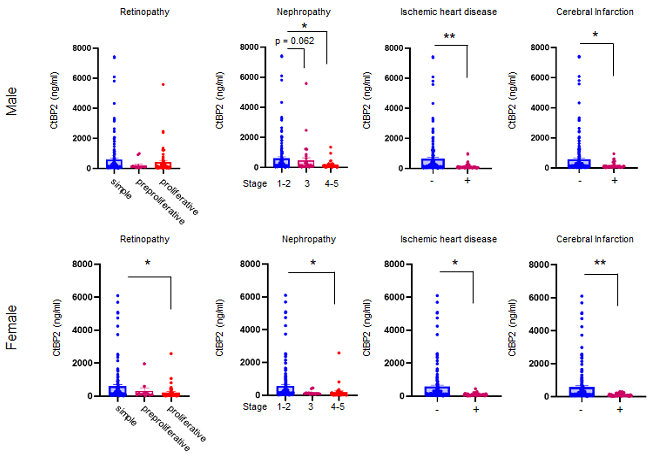Advantages
- Clinical Significance: Measuring blood CtBP2 concentration can predict the onset risk of major complications in diabetic patients (e.g., nephropathy, cardiovascular disease) and assist physicians in making decisions about therapeutic interventions for glycemic control.
Technology Overview & Background
In the treatment of diabetes, understanding the future risk of complications is valuable information for optimizing therapy for each patient. For example, if a patient is identified as high-risk, a decision can be made to implement strict glycemic management and intensive therapy, even if it entails side effects and higher medical costs. Conversely, for low-risk patients, excessive medical intervention can be avoided in favor of safer, milder treatments. Therefore, risk prediction is expected to contribute significantly to the realization of “personalized medicine.”
CtBP2 (C-terminal Binding Protein 2) is a metabolic sensor molecule that senses intracellular metabolites like NADH and fatty acyl-CoA to regulate the expression of metabolism-related genes. It has been suggested that a breakdown in CtBP2 function in obesity leads to abnormalities in metabolic control.
In this study, the inventors measured serum CtBP2 in diabetic patients and found that individuals with lower CtBP2 levels had a higher risk of nephropathy, cardiovascular diseases and cerebral infarction. These results suggest that diabetic cases with high blood CtBP2 concentrations may have fewer complications, and its use as a biomarker to predict the emergence of complications in diabetes care is anticipated.
Data
- As a result of measuring plasma CtBP2 concentration in diabetic patients, higher levels were observed in cases with fewer diabetic complications (renal damage, ischemic heart disease, cerebral infarction).
 |
Publication(s)
- Sekiya, M et al., Cell Reports. Vol. 42, Issue 8, 112914 August 29(2023) DOI: https://doi.org/10.1016/j.celrep.2023.112914
- Sekiya, M et al., Nature Communications. 12:6315 (2021)
DOI: https://doi.org/10.1038/s41467-021-26638-5 - Nature Aging (2025) in press
Patent(s)
JP Patent No. 6894119
Additional pending (unpublished) patents exist.
Principal Investigator
Dr. Motohiro Sekiya (University of Tsukuba)
Project ID:WL-05166c


